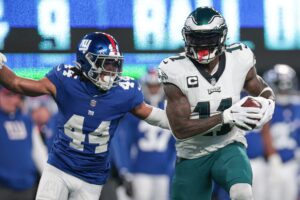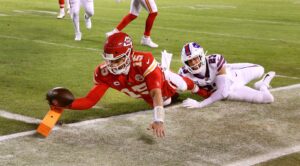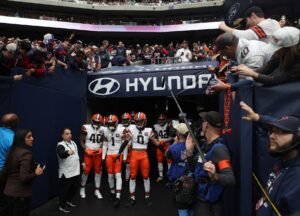With all of the heat the NFL is getting about concussions and how they are handled, the idea has been floated about creating roster exemptions similar to baseball’s seven-day disabled list rule.
However, the discussions so far have been limited to the competition and health and safety committees. One owner stated that the way the current rule is drafted would need to be revisited, as it has too many loopholes teams could exploit for competitive reasons.
Roster Exemptions Due to Concussions: The Good, The Bad, and The Ugly
So how would such a roster exemption work? Simply put, a team could put a player who has been diagnosed with a concussion on the exempt list and replace them with another player on a game-by-game basis until the first player is cleared.
With recent revelations about Tom Brady and Calvin Johnson both having unreported concussions, the league and fans alike suspect that more players may have faked being okay or hidden concussions.
Last year there were rumors that information was circulating to teach players how to establish a lower baseline when they were originally tested, making it easier for them to “beat” the concussion protocol and pass it even if they were injured.
All of these things are bad news for the NFL and the image problem it is already battling. Roster exemptions seem like at least one step in the right direction, although it certainly is not a catch-all solution.
The Good
The good part of this proposal is simple: it would offer teams a possible solution for replacing players who have suffered concussions with higher caliber players than what they might have on the bench. This might incentivize teams to report concussions rather than trying to hide them or rush players through the concussion protocol.
The issue is highlighted by the story of Matt Moore last season, when he suffered a hit from Bud Dupree, but returned to the game after sitting out only one play. A joint review by the NFL Players Association and the league showed that the Dolphins did not “strictly follow the protocol.” Of course, the Dolphins downplayed that the reason Moore did not undergo further evaluations was “not for competitive reasons.”
Of course, the roster exemption would not have helped this “in-game” situation. But last November when the Minnesota Vikings had several members of the offensive line in the concussion protocol, including starters Alex Boone and Eric Kendricks, they could have replaced those players temporarily, and the action might have resulted in a much different outcome for their season.
The Bad
The bad news is that roster exemptions would leave teams an out if a player did have a concussion but was also suffering from another injury. For competitive reasons, the player could “fail” to be cleared from the concussion protocol, allowing the team to replace him in the meantime.
We’d all like to think teams would never do this, but we’d also like to believe that a team who is already a contender would not deflate footballs to achieve an unfair advantage. Let’s face it, though. Football is a competitive sport and cheating seems to only count if you get caught and it turns into a story.
These are the loopholes it seems like the competition committee is trying to close. Since its inception, the concussion protocol has been a difficult thing to balance. Teams want to be competitive and players want to play, but at the same time we want to keep them safe. No fan wants to see their favorite player retire to drool on a pillow for the rest of their lives, but we also don’t want to see them sitting on the bench.
The Ugly
This is where the waters get the most muddied. Players want to play, and fans want to see them play. Teams want to win, and fans want their teams to win. No one would ever say they wanted to see a player hurt, but at the same time players also want to appear tough.
The truth is there are many injuries you can battle through, at least for a game or two. Tape up a shoulder or a knee: the off-season is the time to heal. These injuries can also have lasting effects, but there is something different about the brain and concussions.
A concussion isn’t something you can shake off, and the science saying the damage is severe and lasting is irrefutable. You can get a knee or hip replacement, but the brain runs everything, you can’t fix parts of it once they are broken, and you can’t replace it. Concussions have to be treated differently than other injuries.
It seems like the number of concussions has fallen over the last few years, but the concern with revelations like that of Calvin Johnson and Tom Brady is that players and teams are just getting better at hiding them.
The roster exemption could help if teams use it properly and provided players do not hide their concussions from the team and the league.






